#Eleonor Duse
Explore tagged Tumblr posts
Text
LUCY SHUNS AUDITIONS
July 21, 1950

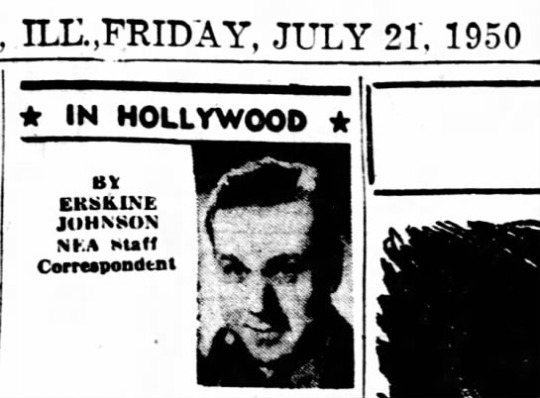
[In the below article, reprinted verbatim, Johnson writes using a lot of imagery and insider jargon. This sort of article was common in trade papers like Variety, but seems odd in a daily newspaper.]
Hollywood—(NEA) Lucille Ball slipped me the lowdown on her failure to pin to the canvas the dumb chick role in “Born Yesterday” and make it holler uncle. (1)
She’s got a touch of Francis the mule in her when it comes to auditions. (2)
Instead of scrimmaging for the role with Evelyn Keyes, Judy Holliday, Marie Wilson, Shelly Winters and Jan Sterling, (3) Lucille went bolting the other way.
The “let’s-see-if-you’re-it” boys pleaded and cajoled.
But Miss Anti-Auditions wasn’t having any of the competition, thank you.
“I figure if they want you, they want you,” Lucille plainspoke it. If you’ve got to read and test for it, to heck with it.’
She isn’t chronicled in Hollywood history, but once, badgered by her RKO bosses, Lucille went tripping over to David O. Selznick’s office for a whack at the Scarlett O’Hara role in “Gone With the Wind.”
That’s what curdled her in the first place.
“It was awful,’’ Lucille shudders. I was shaking all over when I hit Selznick’s office. My knees gave way. I did the whole audition in scrubwoman position. Selznick laughs and says thanks a lot. (4)
Judy Holliday landed the junkman’s doll role and Lucille grabbed a railroad ticket for a personal appearance tour with hubby Desi Arnaz. She strutted to Latin rhythms, swung a glittering purse in a manner dear to runaway girls and wisecracked for the customers. (5)
MIMICS OSCAR WINNER
At the last moment she nixed a dancing and singing routine. The star with the forest-fire hair shrugged:
“I decided it would be silly to compete with Grable.” (6)
A lot of movie queens laid in fresh supplies of smelling salts, ice beanies and copies of “Release From Nervous Tension” when word got around that Lucille was about to whoop it up on the six-a-day circuit. (7)
She’s a blister-raiser from way back and the air was shrill with ouches about a year ago when she whipped up an impression of an Academy Award winner.
But the girls can go back to worrying about other things—like shrinking from larger-than-life to television screen size.
Lucille didn’t let any “furriners” see the routine.
“It's for Hollywood only," she said. “I should take radio-active material on the road?”
Her Oscar-grabber routine is strictly for unreal anyhow, she says. and no blood relation to Bette Davis, Olivia de Havilland, Ingrid Bergman or any other Screen Duse. (8) She insisted:
“She's any movie star, even me. This character has to go up on that stage and act surprised. She’s only been rehearsing what she's going say flor eight weeks. So she says, ‘Ye gads, me? But I’m so unprepared. Really, I didn’t dream...” Lucille is generally is as unflinching about the movie queen business as Pearl White was about onrushing trains. (9)
But her knees executed some wobbles that aren’t in Arthur Murray’s rhumba dance book when she checked into her first vaudeville dressing room. (10)
“Those stages—they’re so big.” she gasped. “Hey, I’d hate to get caught in the middle of one of those stages without bread and water.”
Lucille didn’t take any chances with out-of-town press interviews, either. “I once did a personal appearance tour with Maureen O'Hara and had to show up at a press party,” she grinned. (11)
My sinus - I just die from it - was acting up. The reporter next to me didn’t understand my puffed eyes and cold sores. He called Maureen a lady in his story. But he referred to me as a whisky tenor with red-runny eyes.”
Lucille’s brain cells work on direct current and she’s not one to make with the figure eights when a straight glide to home base would get her there quicker.
They still laugh about her exit line to Louis B. Mayer. (12) Mayer always referred to her as a thoroughbred and sometimes compared her to his famous horses. "Yes, and like your other nags, I'm leaving your stable," Lucille said when she decided to bow out of her contract.
She has high hopes for her new picture “The Fuller Brush Man.” Not that she enjoyed it: (13)
“Honey, this ones that I don t enjoy turn out be the best ones. This one put me in the hospital. My feet are still bandaged up. I’m a mess. No more physical-type pictures for me.”
# # # FOOTNOTES FROM THE FUTURE
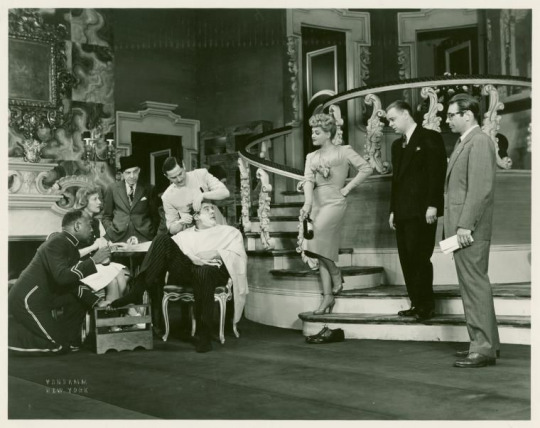
(1) The 1946 Broadway hit comedy Born Yesterday by Garsin Kanin was bought by Columbia Pictures. Things got complicated when its stage star, Judy Holliday, swore she would not do the film version. Columbia used this as fuel for publicity about who would win the role. Naturally, Lucille Ball was considered a top contender. As the article states, she was not eager, however, to prove her worth to the ‘let’s-see-if-you’re-it’ boys (aka producers). There was talk of Lucille performing the play in London, or summer stock, but her film contracts would not allow her time off for a stage run.
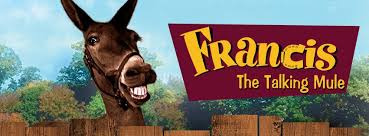
(2) Mules are supposedly notoriously stubborn animals - just like Lucy. Francis the Talking Mule was the star of seven popular Universal-International film comedies. The character originated in the 1946 novel Francis by David Stern III, adapting his own script for the first entry, simply titled Francis. On “I Love Lucy” Fred Mertz sometimes called Ethel “Francis” to indicate she was being stubborn about something.

(3) These were some of the Hollywood stars looking to play the part of Billie Dawn in the film Born Yesterday. Evelyn Keyes (1916 – 2008) was best known for playing Sue Ellen, Scarlett O’Hara’s kid sister, in Gone With The Wind (1939). Judy Holliday (1921-65), changed her mind about playing the role she originated on Broadway, but by then the casting net was cast, and she was just another performer on the short list. She eventually got the role, which defined her career. Marie Wilson (1916-72) was a zany comedic actress in the style of Gracie Burns. She was widely known as the star of radio and TV’s “My Friend Irma”. Shelley Winters (1920-2006) would be nominated for an Oscar the year after this article. She was adept at playing drama and comedy, and had a long-lasting career in Hollywood. She appeared on “Here’s Lucy” in 1968; Critics raved about her Jan Sterling’s portrayal of Billie Dawn in the Chicago touring company of Born Yesterday and Columbia brought her out to the West Coast to test for the film. At one point, she was actually announced to play the part but the role ultimately went to Holliday.
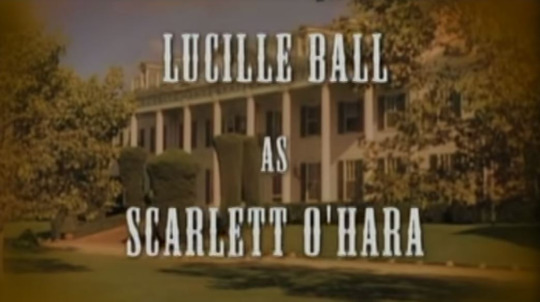
(4) Lucille Ball did indeed read (not screen test) for the role of Scarlet O’Hara, just like nearly all of the women in Hollywood in 1938. Ball told the story several times on television, each time with varying details, but probably most completely on “Bob Hope’s Unrehearsed Antics of The Stars” (1984).
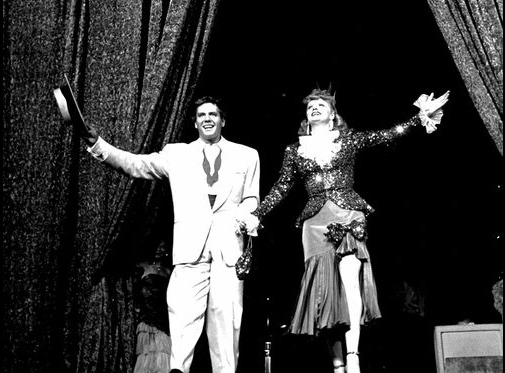
(5) This is a vivid description of the “Cuban Pete / Sally Sweet” portion of Lucy and Desi’s nightclub act to convince sponsors to buy them as a couple.
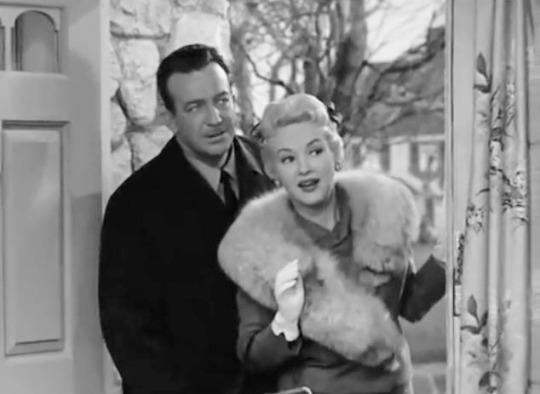
(6) Betty Grable (1916-73) was considered one of the most famous pin-up girls in history. In addition to her million dollar gams (legs), she could sing, dance, and act, too. She guest starred with her then-husband Harry James on “Lucy Wins A Racehorse”, an installment of “The Lucy-Desi Comedy Hour” aired on February 3, 1958.
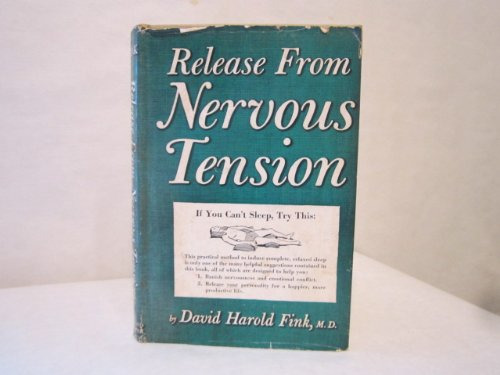
(7) “Release from Nervous Tension” was an actual best-selling book by Dr. David Harold Fink, published in 1950. Vaudeville and Burlesque shows were often known as the ‘six-a-day circuit’ because sometimes there would be as many as six performances of the same act in a day. Naturally, this did not apply to Lucy and Desi, who were big film and radio stars at the time.
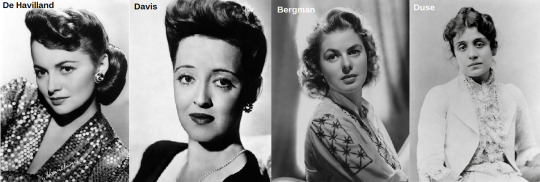
(8) These were some of Hollywood’s top-line dramatic actors. Bette Davis (1908-89) had won two Oscars, and was nominated for several others during her long career. She was supposed to guest-star on “The Lucy-Desi Comedy Hour” in “The Celebrity Next Door” in 1957 but dropped out after a horse-riding accident, leaving the role to Tallulah Bankhead; Olivia de Havilland (1916-2020) had also won two Oscars, the second the year this article was published. She was best remembered for playing Melanie Wilkes in Gone With The Wind (1939); Ingrid Bergman (1915-82) was a Swedish-born actress, who, by career’s end, had scored three Academy Awards. When Johnson talks about “any other screen Duse” he is referring to Eleonor Duse (1858-1924), an Italian-born stage actress known for her grand, dramatic style.
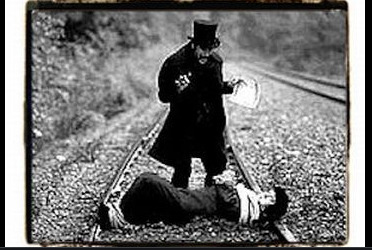
(9) Pearl White (1889-1938) was best known as the silent film actress who was tied to the railroad tracks in “The Perils of Pauline” (1914).
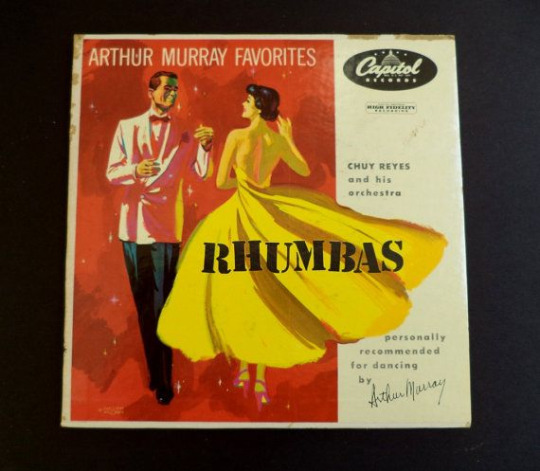
(10) Arthur Murray (1895-1991) was a ballroom dancer and businessman best known for the chain of dancing schools that bear his name. Murray was often a punchline on “I Love Lucy,” especially when the subject of dancing came up. The Rhumba was a Latin dance that took America by storm in the late 1940s and 1950. Desi Arnaz often called his orchestra a ‘rhumba band.’
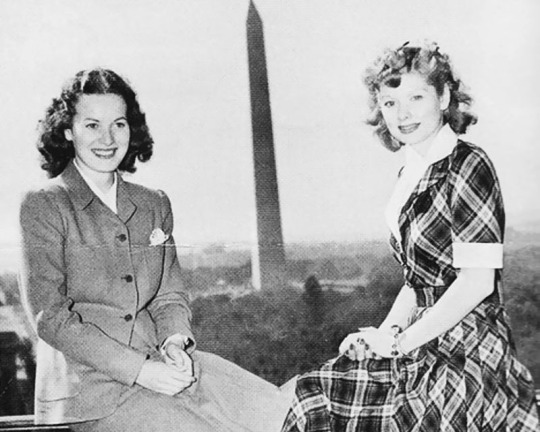
(11) Maureen O’Hara (1920-2015) and Lucille Ball had starred in Dance, Girl, Dance in 1940. As a result, the two went on a promotional tour that took them to several US cities, including the nation’s capitol.
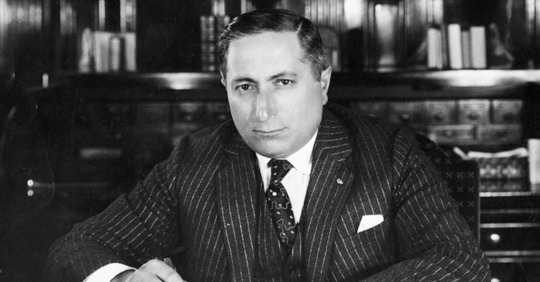
(12) Louis B. Meyer (1884-1957), along with Samuel Goldwyn and Marcus Loew of Metro Pictures, had formed a new motion picture company called Metro-Goldwyn-Mayer (MGM) in 1918. Over the next 25 years, MGM was "the Tiffany of the studios," producing more films and movie stars than any other studio in the world. Mayer became the highest-paid man in America, and one of the country's most successful horse breeders. Both he and MGM reached their peaks at the end of World War II, and Mayer was forced out in 1951, just a year after this article was written.

(13) Erskine Johnson gets the title wrong. Lucille had madeThe Fuller Brush Girl, a sequel to The Fuller Brush Man (1948). The film was released in mid-September 1950.
#Lucille Ball#Erskine Johnson#Newspaper#Fuller Brush Girl#Born Yesterday#Judy Holliday#MGM#Louis B. Mayer#Pearl White#Olivia DeHavilland#Bette Davis#Ingrid Bergman#Release from Nervous Tension#Eleonor Duse#Betty Grable#Desi Arnaz#Gone With The Wind
3 notes
·
View notes
Photo
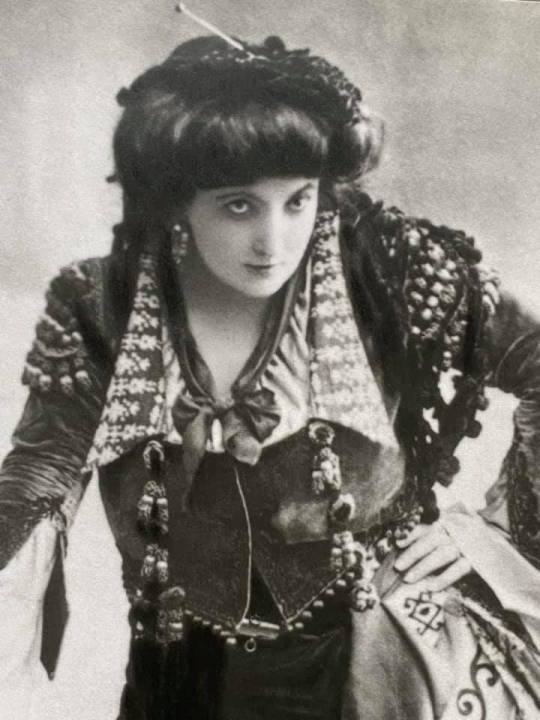
Emma Calvé. Born 1858 in Décazeville; Died 1942 in Millau Rosa-Noémie Emma Calvé (actually Calvet) de Roquer was a flamboyant soprano and mezzo-soprano with a rich, powerful, well-equalized and superbly trained voice. Furthermore, she was a slim, attractive woman and a powerful actress. Her family moved from the village of her birth to northern Spain three months after she was born; she grew up speaking a mixture of French, Spanish, and Basque. Self-dramatizing in her biographies, she said she learned to sing and dance from watching the local gypsies and that later she learned the secret of pure high notes from Domenico Mustafà, one of the last of the castrati, who was director of the Sistine Chapel Choir. Wherever she got it, she had a solid extension to F above high C, a remarkable range for a lyric-dramatic soprano, particularly one with her repertory. She studied with Jules Puget and Mathilde Marchesi and had only indifferent success until she scored at La Scala with what would be one of her signature roles, Ophelia in Hamlet by Thomas. Even then she thought intelligently about the reasons for the prior failures and sought out two more teachers who would shape her career: Rosine Laborde (one of the greatest of voice teachers), and Eleonore Duse, the great actress. She had another success in the role of Suzel at the world premiere of L'Amico Fritz by Mascagni, and then gained another in what would become one of her signature roles, Santuzza in the same composer's Cavalleria rusticana. In 1892 she first sang Carmen. She ended up virtually owning the role. As long as memories of her live performances of the roles of Carmen and Santuzza remained in memory, it would be insisted she was incomparable in both parts. She sang Carmen over 3,000 times. In 1904 she announced her retirement from the operatic stage, but was persuaded to return to sing at Oscar Hammerstein's Manhattan Opera House in 1907 and 1908. She continued to give concerts and recitals until well into World War I. Her farewell appearance in North America was an emotional occasion for French war relief. She retired to a chateau in Millau where she was known as an excellent and tireless teacher, until she was stricken with a long declining illness. She left a small but important legacy of recordings, most made after she had passed her peak. Among them are some 1902 Mapleson cylinders made from the stage of the Met.
2 notes
·
View notes